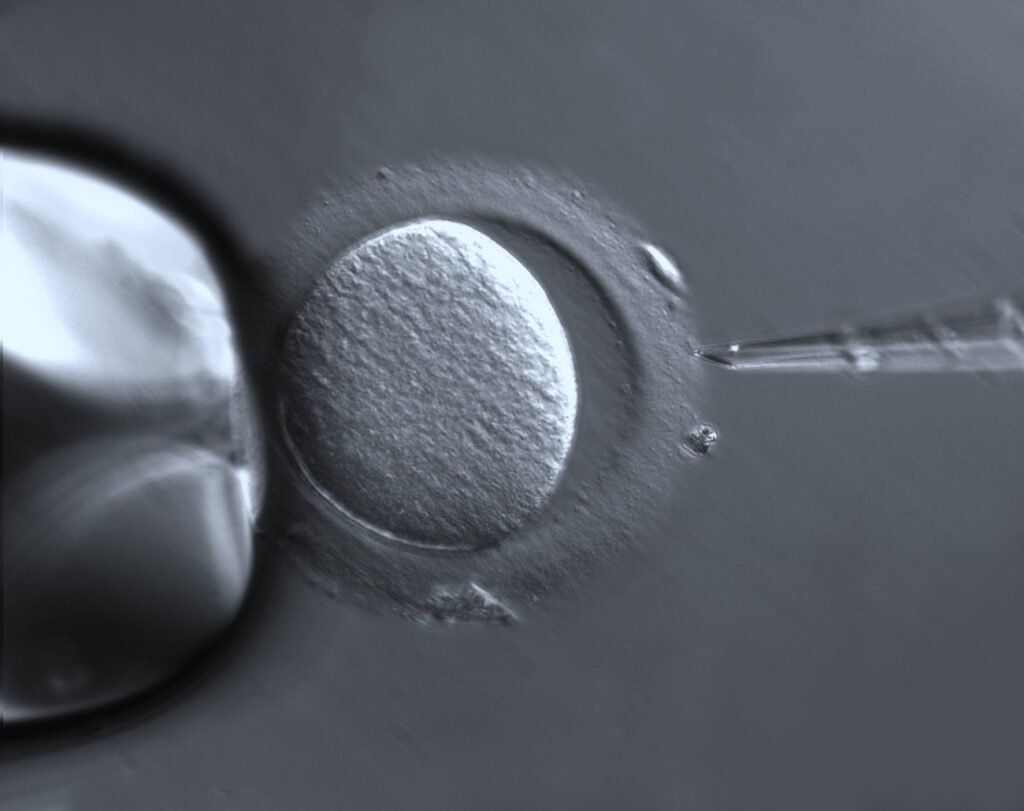Many couples wish to start a family at some point in their relationship. It is an instinct in all human beings to want to share their lives together, undertaking projects and dreams with those closest to them, thus beginning the first big step in starting a family.
But sometimes the road to conception can be complicated or full of uncertainties. From fertility problems to more complex medical conditions can be a stumbling block in the way of this beautiful journey.
Fortunately, medical science has advanced significantly in recent decades, and one of the most effective solutions to overcome infertility challenges is in vitro fertilization (IVF). At iLababy we are committed to helping you build families around the world and overcome all those obstacles that stand in your way.
How does in vitro fertilization work?
In vitro fertilization (IVF) is an assisted reproductive technique that has given many couples the chance to become parents.
In this procedure, the mother’s or donor’s eggs and the father’s or donor’s sperm are united in a laboratory, to achieve healthy embryos. These embryos are then transferred to the uterus of the pregnant woman, to continue with a successful pregnancy.
The in vitro fertilization process consists of several key stages that consist of the following procedures:
Ovarian stimulation
The first step in the IVF process is controlled ovarian stimulation.
During this stage, the woman is given hormonal drugs to stimulate the production of multiple eggs instead of just one, as occurs naturally.
This increases the chances of successful treatment, as more eggs are obtained for later fertilization. At this stage of the process, if egg donation is involved, we try to ensure that the candidates who offer their eggs are no older than 30 years old. This is in order to guarantee that the eggs are of the best possible quality for gestation.
Egg retrieval
The procedure to obtain the eggs from the ovary is called follicular puncture and is done when the eggs are at the right moment to be fertilized. It is performed under sedation or general anesthesia to avoid pain. With a needle guided by an ultrasound image, the eggs are removed and preserved to be fertilized later in the laboratory.
Fertilization
Fertilization is performed after the eggs are retrieved. The eggs and sperm from the father or donor are placed in a dish where fertilization will take place. Depending on the case, conventional in vitro fertilization can be used, which is when the sperm is placed near the eggs so that they can be fertilized naturally, or the injection of a sperm into the egg (ICSI) can be performed, which is when a sperm is chosen and introduced directly into the egg to fertilize it.
Embryo culture
The embryos formed by fertilizing the eggs are kept in a special culture environment in the laboratory. The embryos develop over the course of days, during which they are monitored to identify the most viable ones.
Embryo transfer
The embryos with the highest viability are selected to be transferred into the uterus of the pregnant woman after the culture time. It should be noted that the transfer is a quick and painless process. The embryos are introduced into the uterus through a fine catheter, and the specialist doctor makes sure that the embryos are suitable for their correct implantation.
Pregnancy test
It is necessary to wait two weeks after the transfer of the embryos into the uterus to do a pregnancy test to see if the treatment was successful.
It is always important, but especially in this period, to take care of the health and emotional state of the pregnant woman is essential for her to feel full and confident with the process that has begun.
Why is in vitro fertilization an option to consider?
Overcoming fertility problems
It is especially beneficial for couples facing fertility problems, such as fallopian tube blockages, poor sperm quality or endometriosis. By allowing eggs and sperm to unite in the laboratory, IVF overcomes these obstacles and allows couples to conceive.
Controlling genetic factors
It is also an option for couples who have a high risk of passing on genetic diseases to their children. Prior to embryo transfer, preimplantation genetic testing (PGT) can be performed to detect genetic abnormalities in the embryos. This makes it possible to select healthy embryos and reduce the risk of transmitting serious genetic diseases.
Options for same-sex couples and single people
In vitro fertilization provides parenthood opportunities for same-sex couples and single people who want to start a family. Thanks to IVF, they can use donor eggs and sperm to conceive and achieve the joy of parenthood.
Steady improvements in technology
Advances in laboratory technology and treatment protocols have made it possible for more couples to fulfill their dream of having a child. At Babynova Clinic By Novafem we are constantly at the forefront of technology, which is why we closely follow the evolution of IVF over the years, leading to significant improvements in our clinic’s success rates and further refining our procedures.
We are committed to providing the best care and support to our patients throughout the entire IVF process. Our team of fertility experts is here to answer all your questions, provide you with advice and guide you every step of the way to your desired family.
If you are considering in vitro fertilization as an option to build your family, contact us and we will answer all your questions. We will be happy to help you analyze all the viable alternatives for you.
Do you want to know more about how our procedures work and learn more about infertility?
Contact our team to get all the information in detail!
#IVF and Surrogacy in Colombia and USA #哥伦比亚美国试管婴儿和代孕


